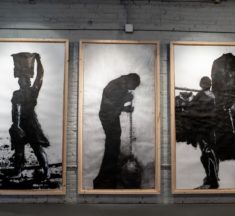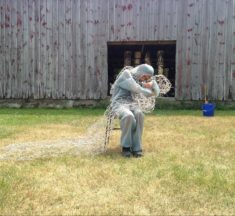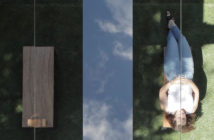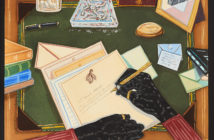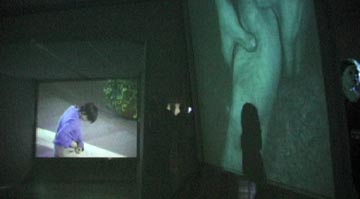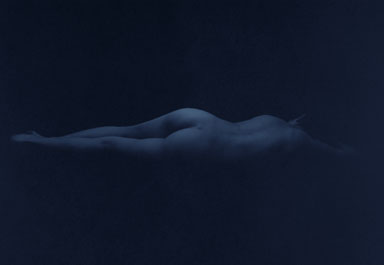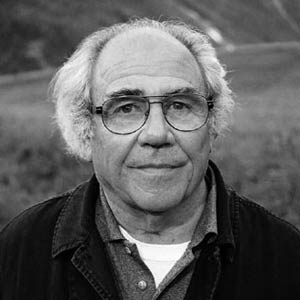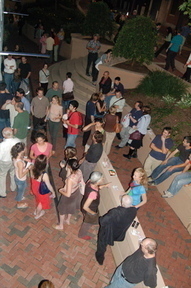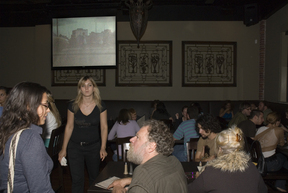Newest Features
By JEREMIAS PAUL You are being watched. We all are. As I write this in the solitary confinement of my apartment, I am reminded, by the sight of the ominous black ball attached to the building adjacent to mine, that I am not always as alone as I think. But who is watching us and when? The camera is turned at us at all times, but where does the watching occur? When does the video feed become activated by the comprehension of human eyes? It is only through the appearance of video…
By CHRISTIAN HOLLAND The best way to critique the absurd is with the absurd; the more flamboyant the critique, usually, the more potent the message.CoachTV, the Raishad Glover and Emily Eastridge “enterprise,” wastes few opportunities for flamboyance in The Buffet Allusion, the Howard Yezerski Gallery’s first show of the 2006 fall season. This is typical for CoachTV, who I had the pleasure of being the subject of during a performance last January at the Midway Theater in South Boston. They have not deviated from their grotesque critique of consumerism and ideals of…
By JON PETRO The human eyes consist of two different types of photoreceptors, rods and cones, which send information to the brain for interpretation. The rods number in the 120 million and are far more sensitive than their counter–part, the cones. The interesting part of human anatomy is that the rods are not in any way sensitive to color. The job of color function is left to the 7 million or so cones. This small little understanding of how the human eyes function may shed some light, no pun intended, on why…
By BIG RED & SHINY REGENERATION @ AIB by BEN SLOAT LOïS MAïLOU JONES: THE EARLY WORKS @ THE MUSEUM SCHOOL by MATTHEW NASH CRAFTY @ MASSART by CHRISTIAN HOLLAND GüNTHER SELICHAR: MEDIA MACHINES @ TUFTS UNIVERSITY by MATTHEW GAMBER OFFSPRING: REPRESENTATIONS OF CHILDREN IN CONTEMPORARY VISUAL CULTURE @ BUAG by HEIDI MARSTON ‘The station wagons arrived at noon, a long shining line that coursed through the west campus. In single file they eased around the orange I-beam sculpture and moved toward the dormitories. The roofs of the station wagons were…
By MATTHEW NASH Art does not die because there is no more art, it dies because there is too much. Jean Baudrillard [1] Is there too much art? What a strange question to have to ask, and yet there are days when the answer seems to be a resounding ‘yes!’ Whether one looks at a small scene like Boston, or a larger market such as New York or Paris, there always seems to be just a bit more art than one can ever absorb. Is it possible that the very idea of…
By BIG RED Friday, September 15, 2006 Candid snaps from a Big RED night on-the-town at Art Interactive for the opening reception for ‘Art Show Down’ – an art-themed game show. Art Interactive Art Show Down
By BIG RED Friday, September 8, 2006 Candid snaps from a Big RED night on-the-town at First Friday openings in Boston’s SoWa District. Boston Sculptors Gallery Kingston Gallery Bromfield Gallery Samson Projects Allston Skirt Gallery O’H+T Gallery
By BIG RED September 6, 2006 Not so candid snaps from a Big RED night on-the-town at The Mission Bar



